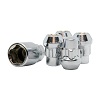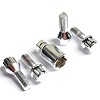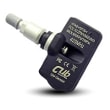What is ABS and how does it work? Technology that saves lives.
Have you ever wondered what makes your car stop smoothly, even when you suddenly slam on the brakes? Have you ever noticed that your wheels don't lock up or lose traction, even under heavy braking? It's all thanks to an automotive technology known as ABS. Learn what this system is, how to use it, how to maintain it, and how to check if it's working properly.
What is ABS?
An ABS (anti-lock braking system) is an advanced braking system that is now standard in most new cars. It's designed to prevent wheel lockup during braking, which in turn helps maintain vehicle control and shortens stopping distances. This is crucial, especially in emergency situations when the vehicle must be stopped suddenly. ABS is particularly beneficial when braking on wet or slippery surfaces, where loss of traction is easily possible. An efficient system allows the driver to have greater control of the vehicle, increasing road safety.
How does ABS work?
ABS works by monitoring the rotational speed of each of the vehicle's wheels. If the system detects that one or more wheels are beginning to lock, it automatically reduces the braking force on those wheels. This allows the wheels to continue to rotate and the driver to maintain directional control.
It's worth remembering that the ABS system operates in cycles—braking, slowing, braking . These cycles can occur up to a dozen times per second. In practice, this means that during heavy braking, the driver may feel a pulsation in the brake pedal—this is normal and indicates that the system is working properly.
Advantages and benefits of using the ABS system
The main advantage of ABS is improved safety. ABS gives the driver greater control of the vehicle during braking , which is especially important in emergency situations. ABS also helps shorten stopping distances , which can be crucial in situations where every centimeter counts. Another benefit of ABS is significantly increased traction. Because the wheels don't lock during braking, the driver has better directional control. This is especially important when driving on slippery surfaces, where it's easy to lose traction. Nowadays, ABS is often also supported by ARS – traction control helps prevent skidding during hard braking. Both systems are designed to protect against skidding in various situations – during braking and acceleration.
How to ensure the proper functioning of the ABS system?
Like other systems in your car, the ABS system requires regular inspection and maintenance. It's worth regularly checking the condition of the brake pads and discs, as well as the brake fluid level. All of these components directly impact the operation of the Anti-Lock Breaking System. Remember, too, that the effectiveness of the ABS is largely dependent on the condition of your tires. Good quality tires with adequate tread are crucial for maintaining traction and the effective operation of the ABS, ARS, and many other systems that improve your road safety.
Can ABS system failures occur and how can they be dealt with?
Like any modern automotive technology, ABS is not without its problems. If the ABS light comes on on your dashboard, it means the system has detected a problem that may be affecting its operation. In this case, it's best to see a mechanic as soon as possible.
Causes of ABS system failure
ABS system failure can occur for a variety of reasons. One of the most common ABS problems is damage to the wheel speed sensors , a key component of the system. These sensors can become damaged due to contamination, corrosion, or mechanical damage.
Another common cause of ABS problems is low brake fluid levels. The ABS system operates under high pressure, and low brake fluid levels can lead to pressure problems in the system.
Damage to the ABS pump or control module are other potential causes of failure. These components are crucial to the system's operation, and their failure can lead to a complete ABS failure. System problems can also be caused by a faulty or damaged braking system. Therefore, it's important to maintain the condition of brake pads, discs, and other components within the system.

Symptoms of ABS system failure
The most obvious symptom of an ABS problem is the ABS warning light on the dashboard. If this light illuminates and doesn't go out after a few seconds, it means the system has detected a problem. Another symptom of an ABS problem can be abnormal braking system operation. If you notice your brakes are working differently than usual, for example, if the brake pedal is firmer than usual or if stopping distances seem longer, this could translate into ABS malfunction and significantly reduced braking, especially on slippery surfaces.
Brake pedal pulsation during normal driving is another potential symptom of an ABS problem. Keep in mind that pedal pulsation is normal during heavy braking, but if it occurs during normal driving, it could indicate a problem.
In summary, ABS is a key element of automotive technology that helps improve road safety. It allows drivers to have greater control over their vehicle when braking, which is especially important in emergency situations. However, remember that proper ABS operation depends on the efficiency of the entire braking system, and the system itself requires regular inspection and maintenance. If you have any problems, it's best to consult a mechanic.

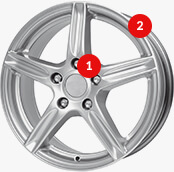

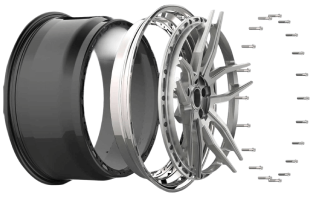
 Modern design
Modern design Perfect fit
Perfect fit High durability
High durability Free shipping within 24 hours
Free shipping within 24 hours
 Individual project
Individual project Dedicated caregiver
Dedicated caregiver


